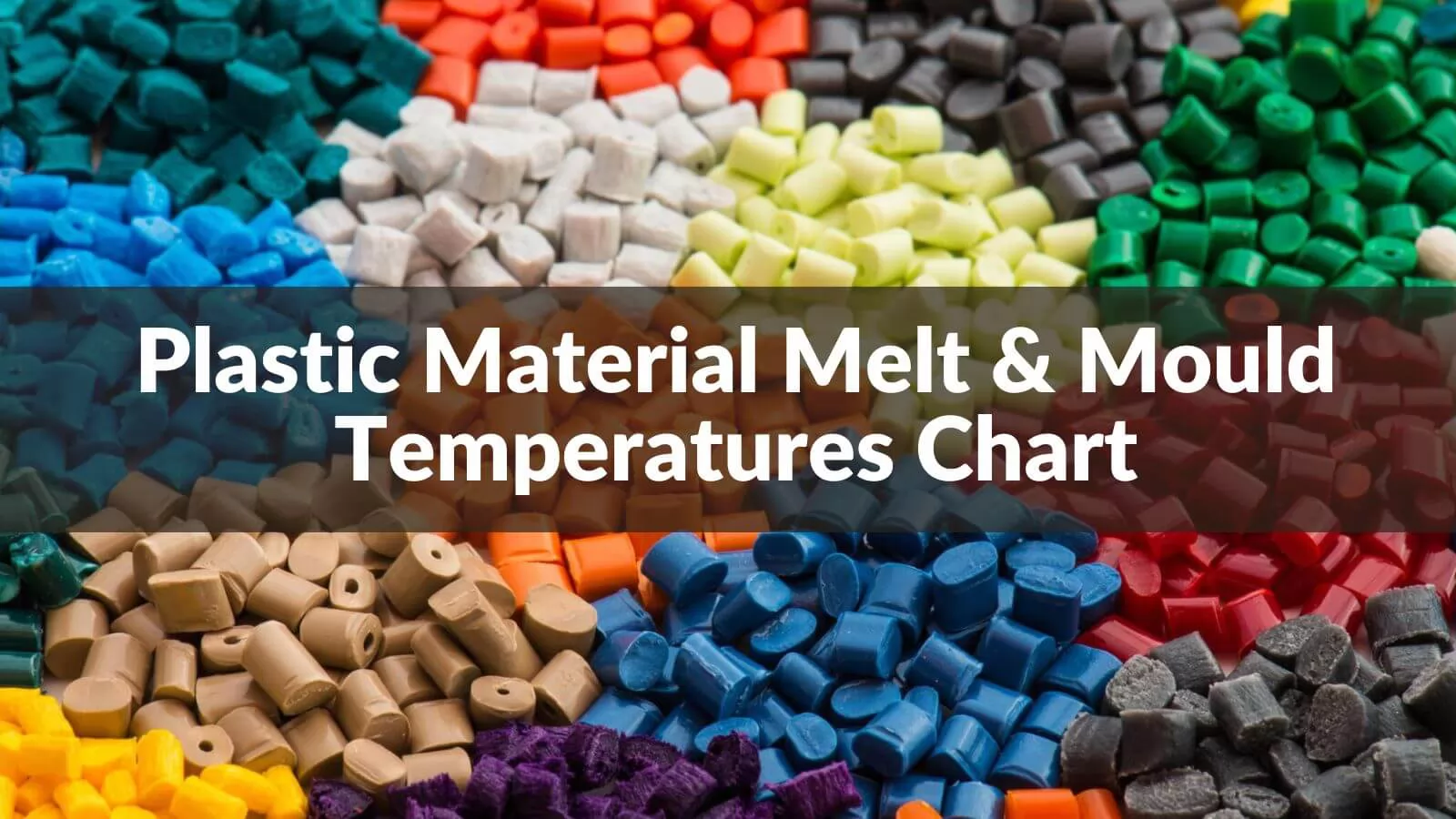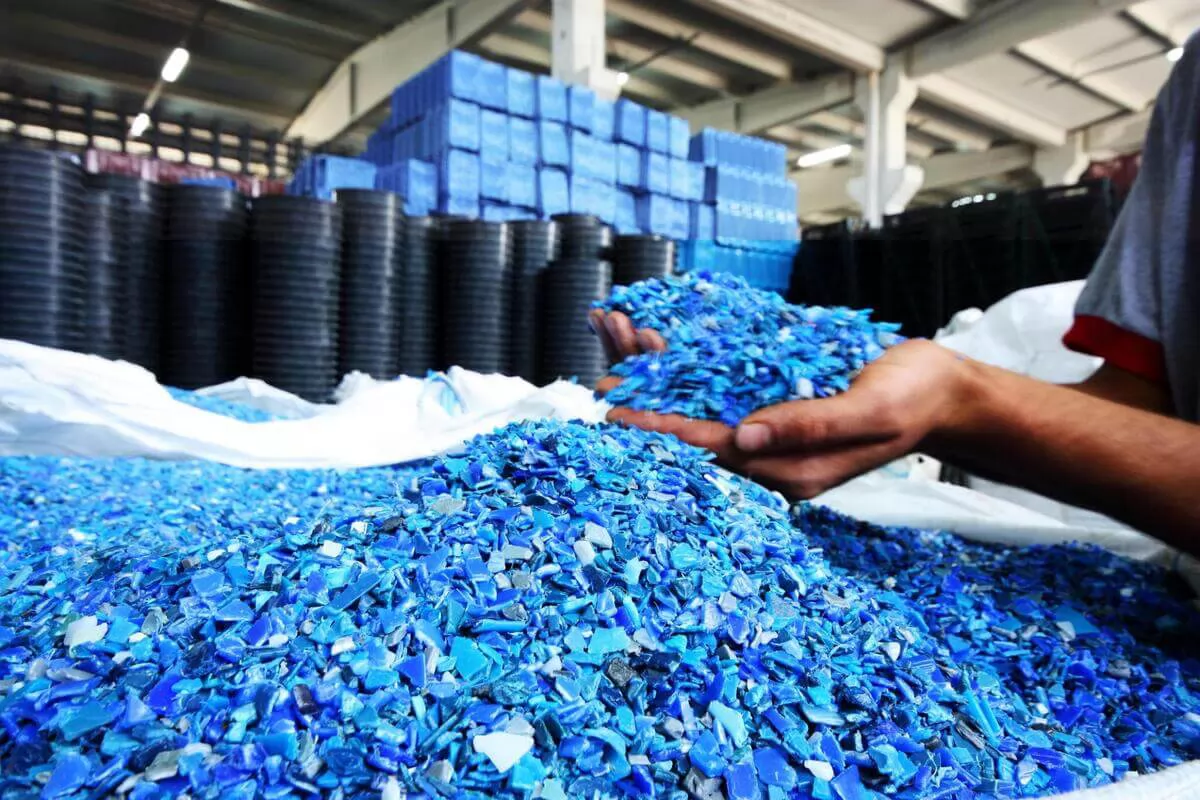
The Plastic Material Melt & Mould Temperatures Chart is an essential tool in the field of plastic manufacturing, providing vital data on the optimal temperatures required to melt and mold various types of plastics. This information ensures that processes such as injection molding, extrusion, and blow molding are performed under conditions that maximize product quality while minimizing defects and inefficiencies. The chart encompasses a range of common thermoplastic materials, each with its unique properties and temperature specifications for melting and molding. This guide serves as a critical reference for engineers, technicians, and professionals involved in plastic manufacturing, enabling them to select appropriate processing temperatures for different materials to achieve desired outcomes.
Plastic Material Melt and Mold Temperatures Table
|
Plastic Type |
Melt Temperature Range (℃) |
Mould Temperature Range (℃) |
Melt Temperature Range (℉) |
Mould Temperature Range (℉) |
Key Characteristics |
|
ABS |
210 - 280 |
40 - 80 |
410 - 536 |
104 - 176 |
Durable, strong impact resistance, aesthetically pleasing finish. |
|
Polyethylene (PE) |
180 - 220 |
20 - 50 |
356 - 428 |
68 - 122 |
Resistant to moisture and chemicals, flexible, used in packaging. |
|
Polypropylene (PP) |
200 - 300 |
20 - 50 |
392 - 572 |
68 - 122 |
Lightweight, excellent chemical resistance, used in containers, automotive. |
|
Polystyrene (PS) |
180 - 280 |
20 - 50 |
356 - 536 |
68 - 122 |
Rigid, clear, used in disposable cutlery, CD cases. |
|
Polyethylene Terephthalate (PET) |
250 - 300 |
80 - 100 |
482 - 572 |
176 - 212 |
Strong, used in beverage bottles and as a fiber in textiles. |
|
Polyvinyl Chloride (PVC) |
160 - 210 |
20 - 60 |
320 - 410 |
68 - 140 |
Versatile, used in pipes, medical devices, wire insulation. |
|
Nylon (PA) |
220 - 300 |
40 - 80 |
428 - 572 |
104 - 176 |
Wear-resistant, used in gears, bearings, clothing. |
|
Polycarbonate (PC) |
260 - 320 |
80 - 120 |
500 - 608 |
176 - 248 |
Impact-resistant, used in eyewear lenses, bulletproof glass. |
|
Polyacetal (POM) |
190 - 230 |
80 - 100 |
374 - 446 |
176 - 212 |
High stiffness, low friction, used in precision parts. |
|
Polybutylene Terephthalate (PBT) |
230 - 260 |
30 - 60 |
446 - 500 |
86 - 140 |
Good electrical properties, used in connectors, housings. |
|
Acrylic (PMMA) |
240 - 270 |
50 - 80 |
464 - 518 |
122 - 176 |
Clear, UV resistant, used in windows, screens. |
|
Polyurethane (PU) |
180 - 250 |
20 - 60 |
356 - 482 |
68 - 140 |
Durable, flexible, used in foam, coatings, adhesives. |
|
Polyethylene Naphthalate (PEN) |
270 - 280 |
80 - 120 |
518 - 536 |
176 - 248 |
Higher barrier properties than PET, used in high-performance applications. |
|
Thermoplastic Polyurethane (TPU) |
200 - 220 |
20 - 60 |
392 - 428 |
68 - 140 |
Elastic, abrasion-resistant, used in phone cases, footwear. |
|
Polylactic Acid (PLA) |
160 - 220 |
20 - 50 |
320 - 428 |
68 - 122 |
Biodegradable, used in packaging, compostable plastics. |
|
Polyphenylene Sulfide (PPS) |
280 - 300 |
120 - 150 |
536 - 572 |
248 - 302 |
Chemical and heat resistant, used in automotive parts, electronics. |
|
Polyether Ether Ketone (PEEK) |
340 - 400 |
120 - 180 |
644 - 752 |
248 - 356 |
High temperature resistance, used in aerospace, medical implants. |
|
Polyimide (PI) |
300 - 360 |
100 - 160 |
572 - 680 |
212 - 320 |
High temperature and chemical resistance,used in electronics, aerospace. |
|
Ethylene Vinyl Acetate (EVA) |
200 - 250 |
30 - 50 |
392 - 482 |
86 - 122 |
Flexible, used in foam products, sports equipment. |
|
Styrene Acrylonitrile (SAN) |
230 - 260 |
40 - 80 |
446 - 500 |
104 - 176 |
Good chemical resistance, used in food containers, kitchenware. |
What is the Melting Point of Plastic?
Plastics, made from a wide range of organic polymers including polyethylene, polystyrene, and polyvinyl chloride (PVC), each possess unique thermal properties that define their specific melting points. This variability implies that there isn't a one-size-fits-all answer to the question of plastic's melting point; rather, it varies depending on the type of plastic.
The melting point is a key factor when working with plastics because it determines how the material behaves under heat. It influences everything from the method of processing to the practical uses of the finished product. For example, thermoplastics can be melted down and reshaped multiple times without significantly altering their chemical structure or mechanical properties, making them suitable for recycling. On the other hand, thermosetting plastics will degrade if heated above their melting points since they are designed to undergo a chemical change that makes them harden permanently.
To provide some concrete numbers, consider these examples: Low-density polyethylene (LDPE) typically melts at temperatures ranging from 105°C to 115°C (221°F to 239°F), while high-density polyethylene (HDPE) has a slightly higher melody point range of 120°C to 130°C (248°F to 266°F). Polypropylene (PP), known for its versatility and toughness, usually has a melting point somewhere between 160°C and 171°C (320°F to 340°F). Polystyrene’s (PS) melting range is quite broad but generally falls between 100°C and 120°C (212°F to 248°F). Polyvinyl chloride (PVC) introduces more complexity due to its formulation variations but typically melts between 160°C and 210°C (320°F to 410°F).
Each plastic polymer requires careful consideration regarding its thermal processing settings not only for effective molding or reshaping but also to avoid degradation or potentially harmful emissions. As such knowledge about the specific melting point of each type of plastic becomes imperative for professionals in materials science, manufacturing industries, and environmental management fields aiming for efficiency and sustainability in their operations.

Why is the Melting Temperature of Plastic So Important?
The melting temperature of plastic determines how it reacts under heat; it represents the point at which a solid piece of plastic turns into a liquid. This characteristic is fundamental in processes like injection molding, extrusion, and thermoforming where molten plastic needs to be shaped into desired forms.
At temperatures below its specific melting point, plastic remains rigid and unworkable for molding or shaping purposes. Conversely, exceeding this temperature can lead to degradation of the polymer structure, resulting in compromised material properties such as strength, color, and clarity. Hence, adhering closely to the recommended melt temperatures ensures that plastics retain their intended characteristics during and after the manufacturing process.
Additionally, maintaining optimal melting temperatures can significantly enhance production efficiency. Correct melt temperatures can reduce cycle times by ensuring smooth flow and rapid cooling, straight from melting to solidification. This precise control diminishes potential waste by limiting the amount of material that degrades due to excessive heat exposure or slow processing time.
Moreover, energy consumption is another aspect deeply intertwined with melt temperatures. Operating at an accurately determined melting point minimizes energy usage since there's no need for excessive heating beyond what is necessary for liquidity and moldability. In a sustainable manufacturing context, this efficient use of energy not only reduces costs but also supports environmental conservation efforts.
The emphasis on correct melt temperatures extends further into safety considerations. Overheated plastics can release harmful fumes or cause equipment malfunctions. Thus adherence to established temperature guides is critical not just for product quality but also for maintaining a safe working environment in plastic manufacturing facilities.
Further Considerations for Plastic Melting & Mould Temperatures
· Thermal Stability of the Plastic: Understanding the plastic's thermal stability is crucial to avoid degradation and material failure when exposed to high temperatures during processing.
· Cooling Rate Post-Moulding: The speed at which a moulded part is cooled affects its dimensional accuracy and mechanical properties. Rapid cooling can lead to warpage or cracks, while slow cooling can result in undesired crystallinity or soft parts.
· Material Additives: Additives like stabilizers, plasticizers, fillers, and reinforcements can modify the flow and solidification behaviors of plastics, requiring adjustments to processing parameters.
· Equipment Considerations: The design and condition of injection moulding machines or extruders can impact temperature settings. Uneven heating or aged machinery may necessitate process control adjustments to maintain consistent material properties.
In Conclusion
In summary, the article provides a comprehensive chart detailing the melt and mould temperatures for various plastic materials, serving as an essential guide for professionals in the plastics industry.
For those looking to optimize their injection moulding processes or seeking more detailed information on specific plastic materials, we encourage you to reach out to our team of experts. Let us assist you in achieving the highest quality and efficiency in your manufacturing endeavors.


